Garter snakes, with their vibrant patterns and curious nature, have always intrigued reptile enthusiasts. But what do these slithering creatures munch on? Specifically, do they fancy frogs for dinner?
Yes, garter snakes do eat frogs. In the wild, they often consume amphibians, including frogs and toads, as part of their varied diet. However, the specific food preference can vary based on the snake’s habitat and availability of prey.
In this article, we’ll delve deep into the dietary habits of garter snakes, exploring their penchant for amphibians, the risks and benefits of various food sources, and practical feeding tips.
From understanding their metabolism to debunking common myths, we’ve got all the juicy details covered. So, whether you’re a snake owner or just a curious soul, hop in for a riveting read!
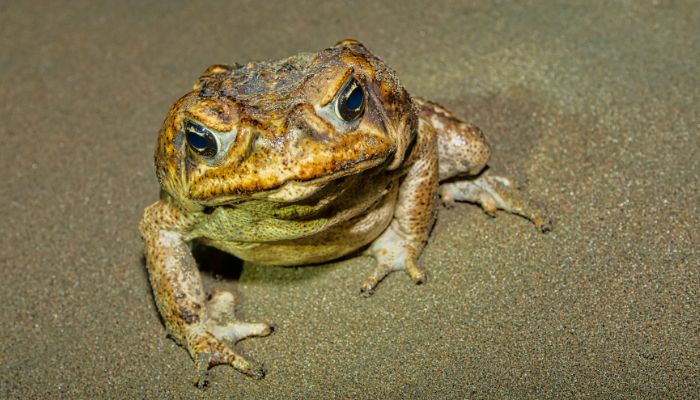
Table of Contents
Frogs and Toads as Food
Did you know that many garter snakes have a particular fondness for amphibians, especially frogs and toads? Let’s dive into this fascinating dietary preference and uncover the reasons behind it.
Garter snakes’ preference for frogs and toads in the wild
In the wild, garter snakes are opportunistic feeders. This means they’ll eat whatever they can catch, and in many habitats, frogs and toads are abundant and relatively easy prey. Picture this: a garter snake slithering through the grass, sensing the vibrations of a nearby frog.
With a swift strike, the frog becomes a meal. Frogs and toads are soft-bodied, making them easier to swallow and digest compared to other potential prey like rodents.
But here’s a fun fact: not all frogs are on the menu. Some toads secrete a toxic substance that can be harmful to garter snakes. However, evolution is a game of cat and mouse (or in this case, snake and frog).
Some garter snake populations have developed a resistance to these toxins, allowing them to feast on toads that other predators might avoid.
The dangers of feeding captive garter snakes with frogs and toads
While it might seem like a good idea to replicate a garter snake’s natural diet in captivity, there are some risks involved. For starters, wild-caught frogs and toads might carry pesticides or other harmful chemicals from their environment.
These toxins can accumulate in the snake’s body over time, leading to health issues.
Moreover, there’s the ethical consideration. Removing frogs and toads from their natural habitat can disrupt local ecosystems and contribute to declining amphibian populations. Always source food for captive animals responsibly.
The risk of parasite transmission
Here’s a not-so-pleasant thought: frogs and toads can be hosts to various parasites. When a garter snake consumes an infected frog, these parasites can be transferred.
Internal parasites, like worms, can infest the snake’s digestive system, leading to malnutrition, weight loss, and other health complications.
For captive garter snakes, it’s crucial to ensure that any frogs or toads used as food are parasite-free. This often means sourcing them from reputable breeders or suppliers who can guarantee their health.
It’s always a good idea to consult with a veterinarian or reptile expert before making any changes to your snake’s diet.
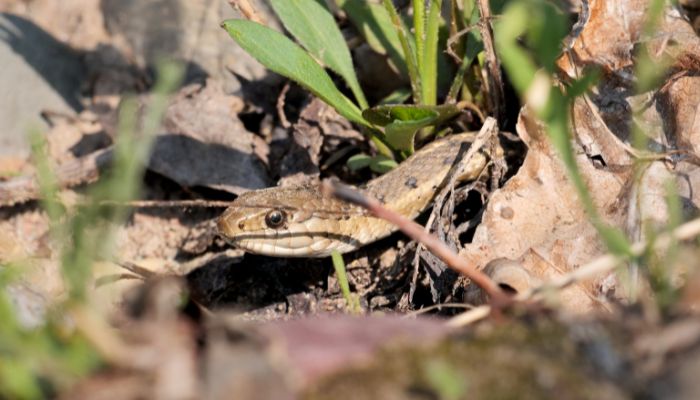
What to Feed Garter Snakes
Garter snakes, with their slender bodies and curious eyes, are a favorite among reptile enthusiasts. But what do you feed these fascinating creatures? Let’s delve into the world of garter snake nutrition and discover the secrets to keeping them healthy and happy.
The necessity of a varied diet for garter snakes
Just like us humans, garter snakes thrive on variety. In the wild, they don’t just munch on one type of prey day in and day out. They’ll feast on frogs today, snatch up a fish tomorrow, and perhaps grab a worm or two the next.
This varied diet ensures they get a mix of nutrients essential for their well-being.
In captivity, replicating this diverse diet can be a bit challenging but is crucial. A varied diet can prevent nutritional deficiencies, stimulate the snake’s natural hunting instincts, and even influence their overall behavior and activity levels.
The role of mice as a complete nutritional source
Now, here’s where mice come into the picture. Mice are like the superfood of the snake world. They’re packed with proteins, fats, and essential nutrients that garter snakes need. For many snake species, a mouse-based diet can be a one-stop-shop for all their nutritional needs.
However, it’s worth noting that while mice are nutritionally dense, some garter snakes might need time to adjust to them, especially if they’re used to a more varied diet. But with patience, most garter snakes can be transitioned to accept mice as a primary food source.
The risks of a non-mouse-based diet
Relying solely on non-mouse foods can be a bit dicey. For instance, a diet exclusively of fish might lack certain essential nutrients, leading to deficiencies.
Similarly, feeding only earthworms might not provide the necessary fats and proteins. It’s all about balance.
If you’re not feeding mice, it’s crucial to ensure the diet is varied and supplemented as needed.
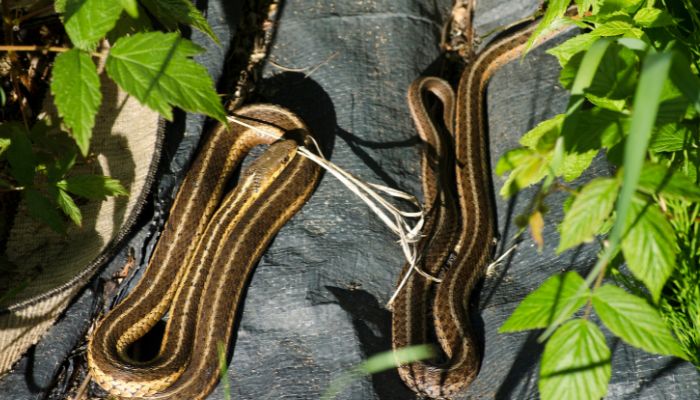
Foods Garter Snakes Won’t Eat
Alright, we’ve talked about what garter snakes love to eat. But what about the foods they turn their noses up at?
Understanding species-specific dietary preferences
Every garter snake is an individual with its own tastes. However, there are some general trends. For instance, while many garter snakes love frogs, some might prefer fish or worms.
It’s essential to observe your snake and adjust its diet based on its preferences.
Debunking myths: garter snakes and insectivores
Here’s a myth that’s been floating around: garter snakes love insects. Well, let’s set the record straight. Garter snakes are not insectivores.
While they might occasionally snack on an insect, it’s not a staple in their diet.
So, if you’re thinking of feeding your garter snake a diet of crickets or mealworms, think again. They need meatier, more substantial prey to thrive.
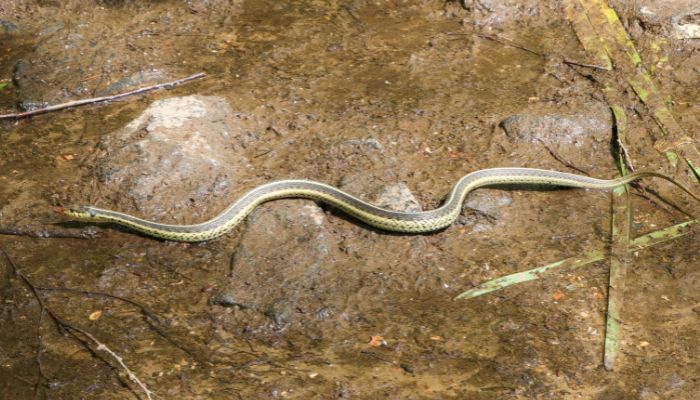
Feeding Frequency and Quantity
Feeding your garter snake isn’t just about what you feed them, but also how often and how much. Let’s unravel the mystery behind these feeding guidelines.
Determining how much and how often to feed garter snakes
Young, growing garter snakes have a faster metabolism and, therefore, require more frequent feedings, typically every 5-7 days. Adult garter snakes, on the other hand, can be fed once every 7-10 days.
The quantity should be such that the prey item is roughly the same width as the snake’s body at its widest point.
Factors influencing a snake’s metabolism
Several factors can influence a garter snake’s metabolism, including its age, size, activity level, and even the ambient temperature of its environment.
For instance, during colder months, a snake’s metabolism may slow down, requiring less frequent feedings.
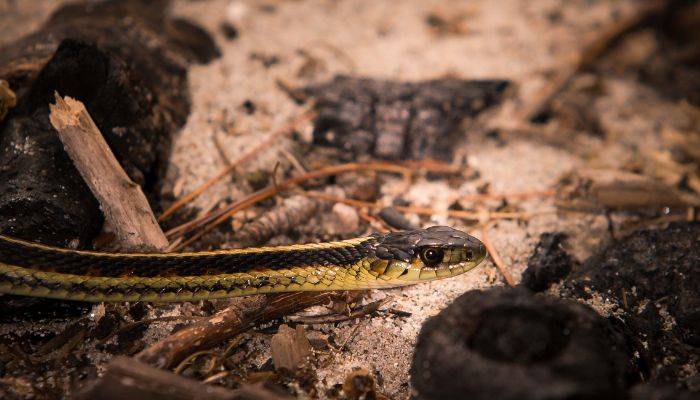
Practical Tips on Feeding Garter Snakes
Feeding a garter snake can be both an art and a science. Here are some practical tips to ensure your snake gets the nutrition it needs without any fuss.
The method of feeding based on the type of food
For live prey like frogs or fish, it’s best to use feeding tongs to avoid any accidental bites. If you’re feeding frozen-thawed mice, ensure they’re fully thawed and warmed slightly to entice the snake.
The challenges of feeding certain garter snakes
Some garter snakes can be picky eaters or may be hesitant to switch to a new type of food. Patience is key. If a snake refuses food, wait a few days before trying again.
Sometimes, changing the environment, like dimming the lights or providing a more secluded space, can make the snake more comfortable and willing to eat.
Conclusion
You’ve journeyed through the fascinating world of garter snakes and their dietary preferences. From their love for amphibians to the practicalities of feeding in captivity, it’s clear these creatures have diverse tastes.
Remember, understanding their diet is key to their well-being. As you continue exploring the realm of reptiles, let this knowledge guide and inspire you.
Every bit of information empowers you to provide the best care for these remarkable creatures. Keep learning and stay curious!
FAQ
Let’s tackle some of the most common queries people have about garter snakes and their amphibian meals.
What do garter snakes eat the most?
Garter snakes are opportunistic feeders, meaning they’ll eat whatever is readily available. In the wild, their diet can include frogs, toads, fish, and earthworms. However, in captivity, many garter snakes are often transitioned to a mouse-based diet due to its nutritional completeness.
What type of snake eats a frog?
Many snake species enjoy a tasty frog now and then. Apart from garter snakes, other snakes like water snakes, some species of king snakes, and even the giant anaconda might snack on frogs if the opportunity arises.
How long does it take a snake to eat a frog?
The time it takes can vary based on the size of the snake and the frog. Generally, a garter snake might take anywhere from a few minutes to half an hour to swallow a frog completely.
Are frogs afraid of snakes?
Frogs, like many other animals, have a natural instinct to avoid predators. So, yes, they are wary of snakes and will often try to leap away to safety when they sense a snake nearby. It’s a game of survival out there in the wild!



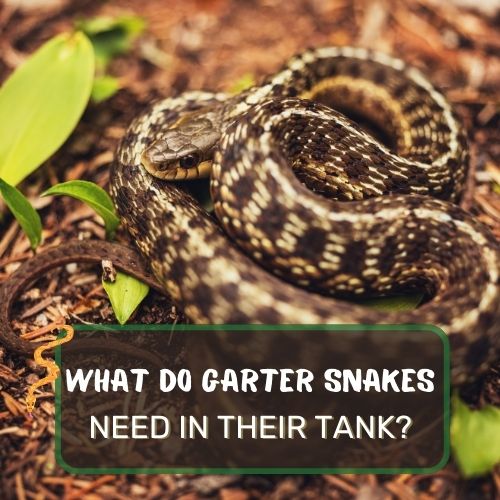
0 Comments